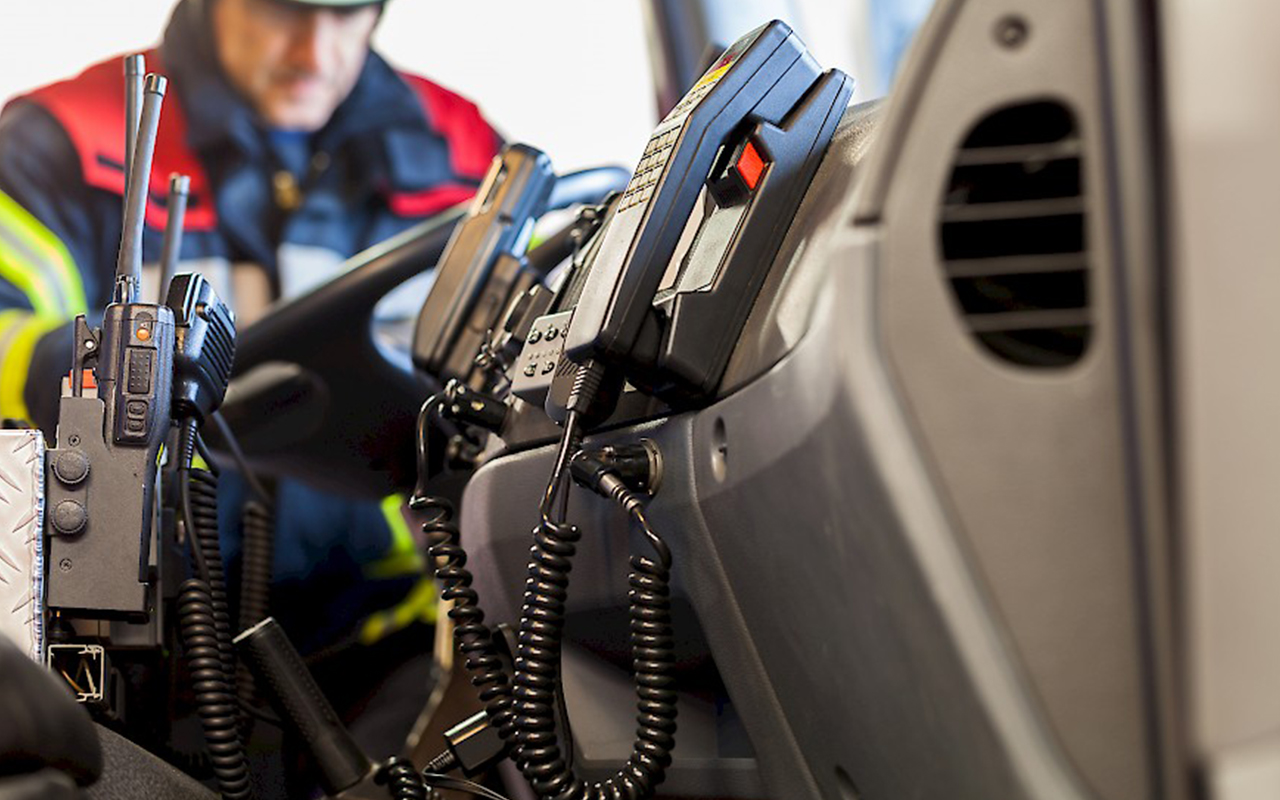- Articles, Communication & Interoperability, Critical Infrastructure, Cybersecurity, Emergency Management, Emergency Medical Services, Fire, Hazmat, Law Enforcement, Public Health, Science & Technology
- The Metropolitan Washington Council of Governments' Interoperable Communications Regional Programmatic Working Group
During complex and large-scale incidents, first responders in the multi-jurisdictional National Capital Region (NCR) must be able to deploy and integrate with other public safety agencies in a timely and efficient manner. The NCR, for the purposes of this document, is defined as the District of Columbia and surrounding Virginia and Maryland metropolitan areas. Successful integration is contingent on first responders’ ability to communicate seamlessly outside the normal coverage area of their home radio systems.
Inter Radio Frequency Subsystem Interface (ISSI) technology allows multiple communications systems to connect and form a single, larger, area-wide network. This “system of systems” technology greatly amplifies capabilities of traditional two-way radios, known as Project 25 (P25) Land Mobile Radio Systems (LMR). When paired with appropriate systems planning and management, standard operating procedures, and recurring training, the ISSI can be an invaluable tool for the NCR to increase the efficiency and reliability of interoperable communications during emergency response.
Benefits & Limitations of P25 & ISSI Technologies
Since 1989, federal, state, territorial, and local public safety agencies have used P25 LMR digital two-way radios, which enable information sharing and communication between multiple users on a single system. P25-compliant radios on one system can also operate on another neighboring P25 system via the Common Air Interface (CAI). However, moving to a neighboring system disconnects users from their home systems and communications with their dispatch centers and agency radios (Figure 1). First responders cite this communications barrier as a primary concern when utilizing P25 radio systems, especially when many first responders using multiple different systems are assigned to a single event.

Fig 1. P25 Land Mobile Radio (LMR) technology (Source: IC RPWG, 2018).
ISSI technology can help overcome some of the limitations of traditional P25 radios when used as a secondary system. ISSI technology forms a bridge between systems so that users can roam between their home systems and neighboring systems without any disruption in service, similar to a Verizon cellphone customer roaming on the AT&T network when out of range of a Verizon tower. Dispatchers can still communicate with their users even if they have traveled out of the coverage area of their radio systems. Furthermore, all communications crossing the ISSI bridge are digitally encrypted for high performance and security.
Despite these advantages, ISSI technology can impede communication if used or managed incorrectly. The problem is similar to what happens when too many cellphone users try to make calls after a disaster in an area with limited network access. If a network becomes overwhelmed by the number of callers trying to access it, it effectively denies service to everyone who is trying to use it (including that network’s paying subscribers).
Similarly, if too many neighboring radio systems try to use the ISSI bridge to connect to another neighbor’s home radio system, this will overwhelm the capacity of the neighbor’s home radio system to take calls, resulting in a “system busy” signal. System busy signals of this type could shut down all communications and block the home radio system users from accessing their own networks.
ISSI Implementation & Integration: National Capital Region
When used properly with primary P25 LMR radios, ISSI technology is a valuable tool that can facilitate greater interoperability in the NCR. For this reason, NCR stakeholders are currently working together on developing proper governance structures to build a common foundation for all users to use ISSI in a way that does not risk compromising any existing communications systems.
Currently, the NCR, through the Metropolitan Washington Council of Governments’ (MWCOG) Interoperable Communications Regional Programmatic Working Group (IC RPWG), is working with jurisdictions and stakeholders to fully integrate ISSI technology as a secondary system and provide regional capacity. The working group is developing a project plan for configuration of ISSI technology with full functional capability before the Washington Metropolitan Area Transit Authority’s (WMATA) Metrorail Public Safety Radio System (PSRS) replacement is completed in 2021.
ISSI technology implementation is expanding across the NCR, most notably in Arlington County, Alexandria, Fairfax County, Prince William County, and Loudoun County. WMATA purchased hardware to allow for Metrorail interconnectivity with jurisdictional partners, and additional connections for use with other potential partners such as D.C., Montgomery County, and Prince George’s County. Prince William County and Fairfax County tested the ISSI technology to ensure that it functions properly if a P25 system malfunctions and found the test to be successful.

The Metropolitan Washington Council of Governments' Interoperable Communications Regional Programmatic Working Group
The Interoperable Communications Regional Programmatic Working Group (IC RPWG) brings together the National Capital Region’s interoperability partners to enhance the preparedness, responsiveness, and safety of communities by seamlessly sharing data, communications, information, and resources across jurisdiction and discipline boundaries and practicing collaborative decision-making. The IC RPWG works toward this vision by implementing a strategy to address focus areas and objectives of the region, with the support of the Metropolitan Washington Council of Governments (MWCOG) Department of Homeland Security and Public Safety (DHSPS). The MWCOG DHSPS fosters collaboration and provides subject matter experts and decision-makers with the tools needed to make sound financial, resource, and programmatic decisions regarding regional homeland security preparedness, response, and recovery. For further information about ISSI integration within the NCR, please contact Mike Newburn, chair of the IC RPWG, at (703) 883-7050 or Michael.Newburn@fairfaxcounty.gov
-
This author does not have any more posts.






